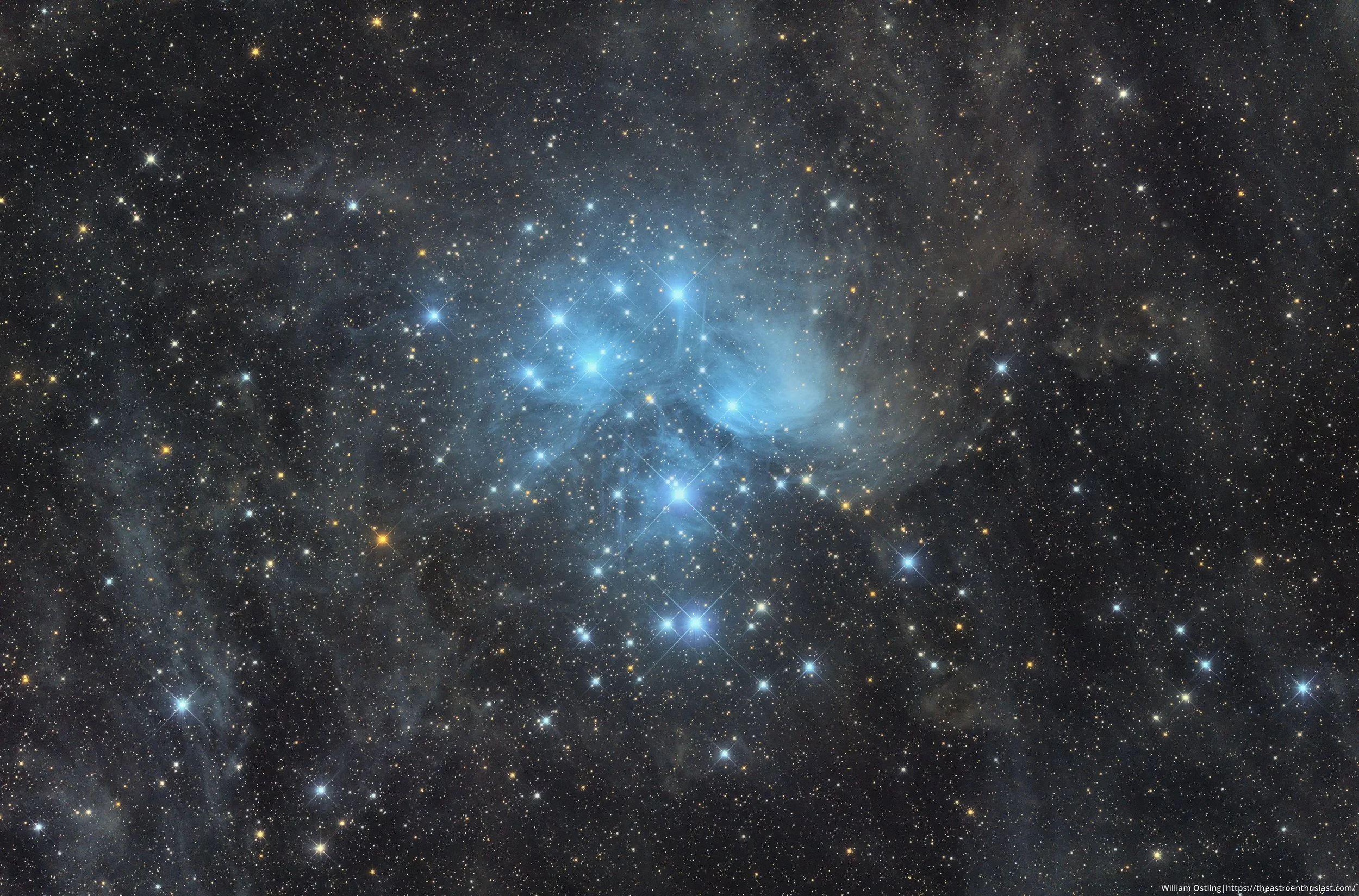Grand Pleiades
Image Description and Details : Perhaps the most famous star cluster on the sky, the bright stars of the Pleiades can be seen without binoculars from even the depths of a light-polluted city. With a long exposure from a dark location, though, the dust cloud surrounding the Pleiades star cluster becomes very evident.
Two techniques were used to get this image: framing selection and downsampling. I chose only about 65% of the frames that I actually shot, removing bad signal from out of focus, cloudy, or polluted frames. I also downsampled the image by 50% increasing snr and the amount of dust I imaged.
Equipment:
Nikon D90
Sigma 300mm prime lens
Sky-Watcher Star Adventurer
Star Adventurer Tripod
Bahintov Mask
Intervalometer
DIY diffraction spikes
Stellarium
All Sky Plate Solver
Nina
Acquisition:
ISO 800, f/4.0
Taken from a bortle 2 zone during the new moon.
Taken on 10/4, 10/6, 10/7, 10/8
231 x 3′ light frames (11.2 hours)
200 total flat frames
67 dark frames
200 bias frames
Processing:
WBPP for calibration
Normalize scale gradient +ESD stacking
Crop away stacking artifacts
DBE
Color calibration
Noise reduction
Repair HSV separation
ArcsinH stretch
Starnet + exponential transform + pixel math to enhance nebulosity
MMT, histogram transformation, curves transformation, Local histogram – Multiscale processing
HDR multiscale transform
Local histogram equalization
Curves transformation
Copyright: William Ostling
AAPOD2 Title: Grand Pleiades
AAPOD2 Page Link: https://www.aapod2.com/blog/grand pleiades
Submit Your Photo!

